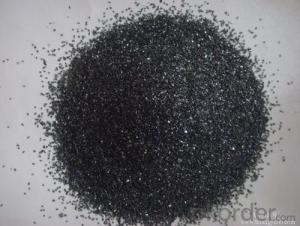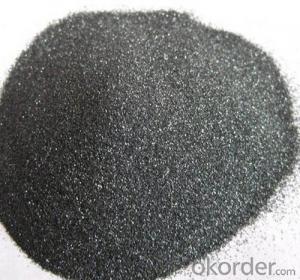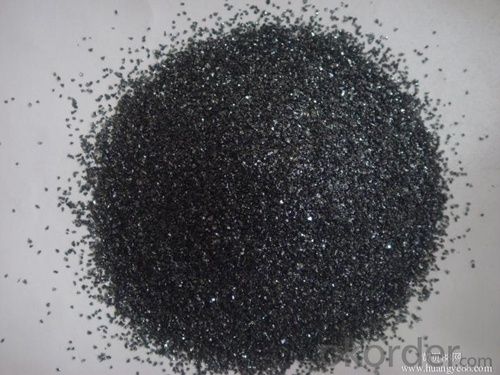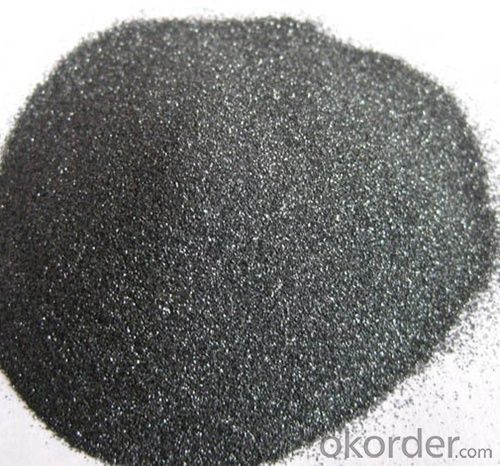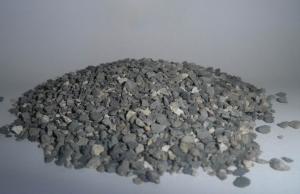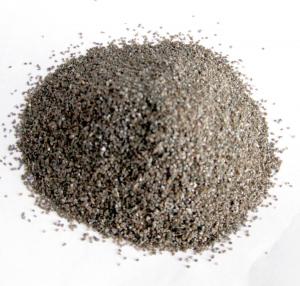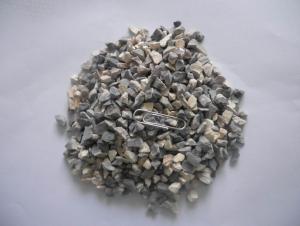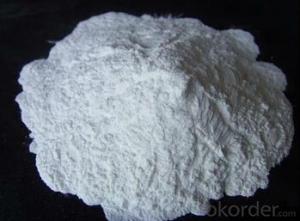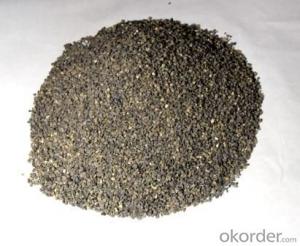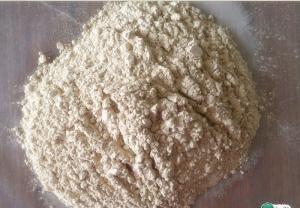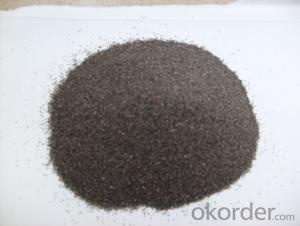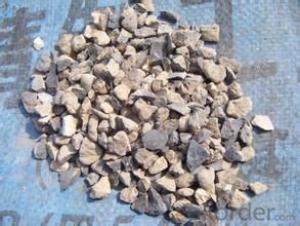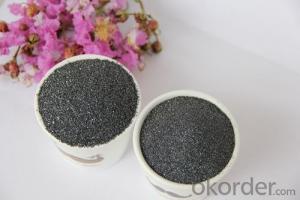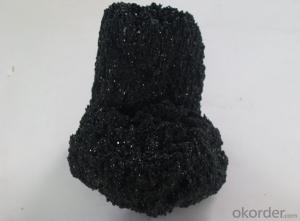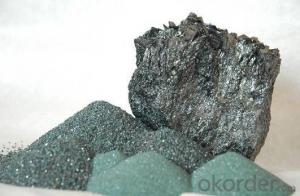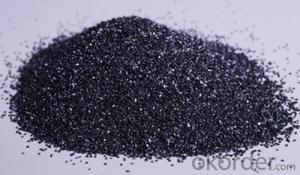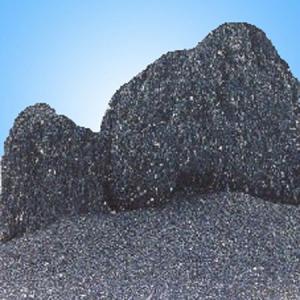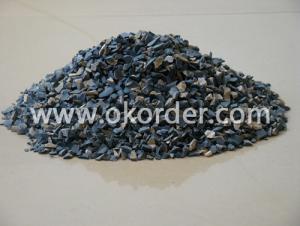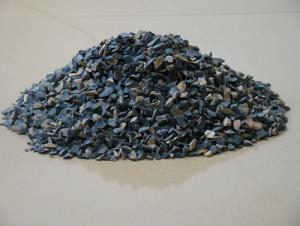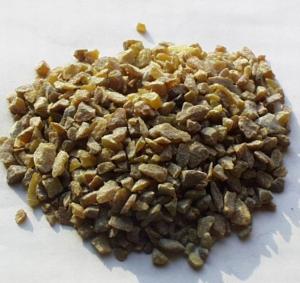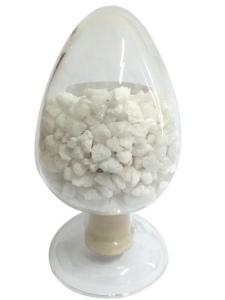High Purity Green and Black Silicon Carbide SIC CNBM - Raw Materials for Refractory
- Loading Port:
- China main port
- Payment Terms:
- TT OR LC
- Min Order Qty:
- 25 m.t.
- Supply Capability:
- 2000 m.t./month
OKorder Service Pledge
OKorder Financial Service
You Might Also Like
Packaging & Delivery
| Packaging Details: | 1) 25kg woven bag,40 woven bags/jumbo bag. 2) 25kg woven bag,40 woven bags/pallet 3) 25kg paper bag,40 paper bags/pallet 4) 25kg paper bag,40 paper bags/paper box |
| Delivery Detail: | 10DAYS AFTER CONFIRMATION ORDER |
Specifications
F220 High purity SiC
Professional manufacturer
Passed REACH ,ISO-9001:2008
We provide the best quality C in china with high tech testing instrument gurantee the quality.
Grinding Black Silicon Carbide
Black silicon carbide is produced at high temperature in an electric resistance type furnace with quarts sand and petroleum coke as its main raw materials. It is used for making bonded and coated abrasive tools, grinding metal and non-metal materials of lower tensile strength, such as gray cast iron yellow bronze,aluminum, stone, leather, rubber, etc.
Chemical Compsition (%)
Grit | Sic | F.C. | Fe2O3 |
F12-F90 | ≥98.50 | <0.20< span=""> | ≤0.60 |
F100-F150 | ≥98.00 | <0.30< span=""> | ≤0.80 |
F180-F220 | ≥97.00 | <0.30< span=""> | ≤1.20 |
F230-F400 | ≥96.00 | <0.40< span=""> | ≤1.20 |
F500-F800 | ≥95.00 | <0.40< span=""> | ≤1.20 |
F1000-F1200 | ≥93.00 | <0.50< span=""> | ≤1.20 |
P12-P90 | ≥98.50 | <0.20< span=""> | ≤0.60 |
P100-P150 | ≥98.00 | <0.30< span=""> | ≤0.80 |
P180-P220 | ≥97.00 | <0.30< span=""> | ≤1.20 |
P230-P500 | ≥96.00 | <0.40< span=""> | ≤1.20 |
P600-P1500 | ≥95.00 | <0.40< span=""> | ≤1.20 |
P2000-P2500 | ≥93.00 | <0.50< span=""> | ≤1.20 |
Physical Index
Grits | Bulk Density | High Density | Grits | Bulk Density | High Density |
F16 ~ F24 | 1.42~1.50 | ≥1.50 | F100 | 1.36~1.45 | ≥1.45 |
F30 ~ F40 | 1.42~1.50 | ≥1.50 | F120 | 1.34~1.43 | ≥1.43 |
F46 ~ F54 | 1.43~1.51 | ≥1.51 | F150 | 1.32~1.41 | ≥1.41 |
F60 ~ F70 | 1.40~1.48 | ≥1.48 | F180 | 1.31~1.40 | ≥1.40 |
F80 | 1.38~1.46 | ≥1.46 | F220 | 1.31~1.40 | ≥1.40 |
F90 | 1.38~1.45 | ≥1.45 |
Size Available
F12-F1200,P12-P2500
0-1mm,1-3mm,6/10, 10/18, ,200mesh,325mesh
Other special spec. could be supplied as required.
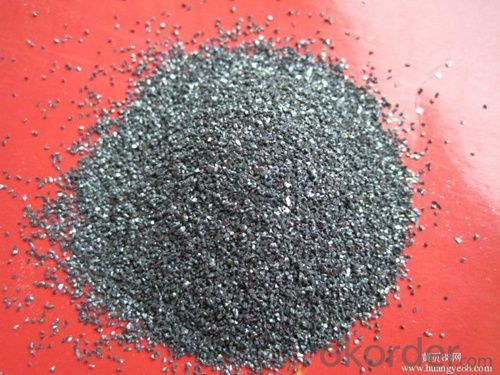
- Q: hat kind of fire retardant materials are there
- At present, there are mainly organic and inorganic flame retardant materials, halogen and non halogen. Organic flame retardant materials are represented by bromine, nitrogen and phosphorus and its compounds; Inorganic fire retardant materials include antimonous oxide, magnesium hydroxide, aluminum hydroxide, and silicon. Generally speaking, organic flame retardant materials have a good affinity, and can be added in the plastics. Brominated flame retardant agent occupy the absolute advantage among organic flame retardant system, though it’s “controversial” in terms of environmental protection, it has been difficult to have other flame retardant system replaced.
- Q: How to divide fire rating of decorating materials ?
- level A: incombustible, B1: Flame retardant, Level B2: combustible, Level B3: Flammable.
- Q: What's the fire?retardant material of roller shutter fire resistance door ?
- Fire resistant rolling shutter door is generally filled with aluminum silicate fiber cotton inside.
- Q: Procedures for producing common refractory materials?
- The general procedures of producing refractory materials include calcination of raw materials, selection of raw material , crushing, grinding, screening, mixing, ageing mixture, molding, drying, burning and etc. At present, the refractory factory usually purchases the calcined clinker, so the calcination of raw material is no longer a consideration of common refractory plants.
- Q: How to distinguish the fire?rating of rubber and plastic thermal insulation material?
- It is divided into level A, B1, B2 and B3. According to the current "burning behavior of building materials classification method", Level A insulation material is a non-combustible material, which belongs to YT. However, from the point of view of the current market , level A insulation material are very few, only glass wool, rock wool board, foam glass and vitrified micro bead. However, compared with level A insulation material, the more welcomed by the market is the organic insulation material. This is characterized as thermal insulation material, which is divided into three levels: level B1 is flame retardant, level B2 is flammable and level B3 is flammable. The level B1 nonflammable thermal insulation material is determined according to the fire endurance of the material. And different parts of the material are divided differently! Such as the common EPS / XPS insulation boards through special treatment of adding flame retardant. . Level B2 combustible insulation material is commonly the EPS expanded polystyrene foam insulation board and XPS board, that is, the ordinary plate. This material has low ignition point, and releases large amounts of harmful gases in the combustion process . Level B3 flammable insulation material is commonly the thermal insulation material taking polystyrene foam as the main material. Since this material is highly flammable, it has been out of the external wall thermal insulation materials. As for the civil construction insulation materials, China's current popular building insulation materials in the market are mainly made of three organic foams: EPS (molded polystyrene board), XPS (extruded polystyrene board) and PU (polyurethane).
- Q: What are the qualifications of refractory industry?
- 1 business license 2 tax registration certificate 3 organizing institution bar code 4 production permit
- Q: How long is the duration of fire resistance of hollow glass magnesium board
- Glass magnesium board is non-combustible board with excellent fire resistance ability, the continuous burning time of flame is 0, non-combustible at 800℃, no flame at 1200℃, achieving the highest level of fire retardant level A1; Partition System cooperated with high-quality keel can endure fire for more than 3 hours. In the process of combustion, a large amount of heat energy can be absorbed, and the temperature of the surrounding environment will be delayed.
- Q: Who knows about the fire endurance of sintered shaly hollow bricks?
- Sintered shaly hollow bricks of Chu area have high intensity. The average compressive strength of them is up to 15.8, which matches with M7.5 cement mortar that has advantages of low water absorption, and good anti efflorescence performance. The fire endurance of sintered shaly hollow bricks should not exceed1050 degrees otherwise they will burn excessively. I, actually, think that the temperature should be controlled within 980 degrees. I hope my answer may help you.
- Q: How long is the duration of fire resistance that fireproof door of level B can endure?
- The national standard for fireproof door of level B is 1.5h, which must be achieved. The data GB12955-2008 means that the door leaf of raw material is 0.8mm-1.2mm in thickness and door frame is 1.2mm-1.5mm in thickness. And other metal melting temperature shall not be less than 950℃, the duration of fire resistance shall not be less than 0.9 hours. Fire department will check and accept based on the manufacturer's inspection report, so you have to refer to manufacturer's inspection report if you want to know more in detail.
- Q: Which one is better, fire-resistant wood or steel?
- From the aspect of low-carbon and environment protection, the steel and timber structures are both OK, they are both renewable resources, the steel can be recycled and melt down again and wood can continue to be planted. Fireproof board Fireproof board is a refractory material used for surface decoration. It is widely used in interior decoration, furniture, kitchen cabinets, laboratory tables, walls, and other fields.
Send your message to us
High Purity Green and Black Silicon Carbide SIC CNBM - Raw Materials for Refractory
- Loading Port:
- China main port
- Payment Terms:
- TT OR LC
- Min Order Qty:
- 25 m.t.
- Supply Capability:
- 2000 m.t./month
OKorder Service Pledge
OKorder Financial Service
Similar products
Hot products
Hot Searches
Related keywords
